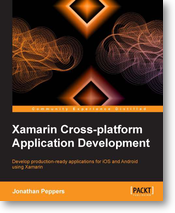Going Back to Evernote
Much like the quest for the holy grail (my hunt for the perfect Todo list app (OmniFocus winning out currently)) I’ve never found the perfect note taking app, but I’m back with Evernote (Premium, and getting a better feeling of value from it than I did before), and in fact am typing this up as a draft in Evernote, so thought I’d outline where I’ve been, and why.
Right now I’m all in on Mac and iOS and have been for the last 2 years, before that I preferred Mac but had a need for Windows on the day job and inter operated with more of a Windows shop, back before that I was all Mac – so times change, needs change, the people you need to work with change so that dictates my requirements.
Evernote – Round #1
Back when this reminisce started (Let’s call it 2010 and be wildly out, but close enough), certainly when Evernote was new, I was working off a Mac, Windows PC (pesky Visual Studio) and an iPhone, I was self employed in a team of 1. Evernote did a job that nothing else did at the time, cross platform, synchronised notes, it kept all my crap together. It was a long way from perfect, I could easily break the sync if I stored anything more than words and pics, but it was free for my needs and in a league of it’s own. I vaguely remember One Note coming out but not giving it much attention, as is often the way with the big boys offerings it had less features for a V1 and the updates were too slow and infrequent, and I was happy so want look away.
Enter One Note
Time moved on, tablets arrived, my career changed (more Windows, more team working) and I drifted over to One Note. From memory the drivers where that the Windows version of Evernote that I needed day to day now was pretty unstable, I was on the paid for service, and I was the only one of the team using it, so One Note won (even though there were two versions in parallel depending on whether your were using the Metro UI (tablet mode) or The Desktop app – v confusing.
Give Apple a go ….
That all worked, we put up with the weird One Drive / Sharepoint Storage requirements to share and collaborate and made the most. Then I left, and was back on my own again, and blessedly in a Mac / iOS only world. Apple Notes was getting better, so I spat everything out as PDF (only format that maintained pictures, highlighting and was searchable) and gave that ago. It was basic, frustrating, but basic – up until the big revamp, when iPad Pro’s came along, pencils, annotation all that Jazz, I was sold – I thought.
… then Bear ….
Except I’m a developer, I have code snippets, sql queries, scratchpads of stuff I’m debugging and it piles up, quickly. The Apple Notes search and organisation wasn’t great, and the presentation was poor, not enough fonts, syntax highlighting, it really was a digital scrapbook (credit where it’s due the pen support and the iOS / Mac share sheet support was great). So about 6 months ago I jumped in with Bear, heard lots of good things, markdown support seemed like something I should need (I didn’t) and the tag based filing system seemed massively flexible (it was, but still not for me).
I never really committed 100% to Bear, I was migrating from Apple Notes by hand (easier to do on iOS than Mac bizarrely, mostly down to the lack of export support – shame on you Apple, bad lock in ☹️), and still had a lot left behind. I think my biggest bugbear (no pun intended) was the copy and paste support, by default it was Markdown, which broke near everything I wanted to store (sql queries, code snippets, json etc) so I had to remember to right click and paste as code – just wish it could work that bit out for me! Lack of tables was also annoying, and no real Apple Pencil support on the iPad – but I can see for many how it would be perfect.
Evernote round #2
And then I remembered Evernote, and thought I’d give it a try again. I caught up with what had changed, the pricing model for one, seems expensive compared to Bear, but then I wasn’t fairly comparing like with like. Using a variety of Applescripts and a few other tools I got pretty much everything out of Bear (Saved all as RTF and manually dragged back any non image attachments) and Apple Notes (AppleScript to recreate all the text notes), not perfect but good enough – most of it is stuff I’ll never refer to again anyway. If it’s of use my Apple Notes to Evernote script is below (source credit within the links section at the end);
tell application "Notes" set theMessages to every note repeat with thisMessage in theMessages set myTitle to the name of thisMessage set myText to the body of thisMessage set myCreateDate to the creation date of thisMessage set myModDate to the modification date of thisMessage tell application “Evernote” set myNote to create note with text myTitle title myTitle notebook "Apple Notes" tags ["Apple Notes"] set the HTML content of myNote to myText set the creation date of myNote to myCreateDate set the modification date of myNote to myModDate end tell end repeat end tell
On the iPad the native pencil / scribbling support is mediocre, but through Notability or Penultimate I can get a better experience and the PDF / OCR / text searching makes up for a lot. Which leads me to the big win, I have a paperless home / office setup where all the paperwork, bills, statements etc get scanned, OCR’d, tagged and filed into Dropbox (Hazel and PDFPenPro if you were wondering), but I never had the perfect means to search and find whilst on the move (Spotlight search once OCR’d is perfect on the Mac), but with a little more AppleScript I’ve extended that process so a copy ends up in Evernote too (backups are always nice) so available and searchable on the iPad, Phone and Web, and imported the old archive. Suddenly here I saw the value in Evernote’s pricing, it gives me much more than just Notes.
Where Next?
So that’s where I am for cross platform Notes, and more, my only concern right now is whether Evernote’s business model is sustainable as there seem to be questions around their future, and there have been layoffs, fingers crossed as they’ve been innovators in this space and competition is good.
Come back in 6 months and ask me where I am then 🤔😋
Links:
Simple Cross-Platform File IO for iOS, Android, and Windows
One of the biggest challenges in Cross Platform Mobile App Development is implementing a mechanism of performing simple tasks on each diverse platform, such as reading a config file on app launch, when you know that each platform will store this file in a different location, have a preference for different file formats, and have different permission mechanisms for reading and writing. This plugin helps nail most of those issues.
Most mobile applications need to interact with the underlying file system. Be it building a database or caching data, some understanding of how file systems work on target platforms is required. If you’re working with multiple platforms, not only does this require understanding of how each individual file system works, but also how to work with the file system from shared code.
The File System Plugin for Xamarin and Windows reduces the underlying file system complexities for each platform into a cross-platform file IO API for iOS, Android, and Windows, making it extremely easy to work with the file system from shared code. In this blog post, you will learn how to use the File System Plugin for Xamarin and Windows to create, edit, and delete files and directories from shared code.
Introduction to the File System Plugin for Xamarin and Windows
Similar to desktop operating systems, mobile operating systems each have their own file system. Building applications that target multiple operating system requires knowledge of not just one file system, but the underlying file system for each platform. Another barrier when working with file systems is the inability to use code that talks to individual file systems in shared code. A common solution to this problem is to use preprocessor directives (#ifdefs) to access platform-specific features, but this won’t work with PCLs and results in messier code.
Plugins for Xamarin expose platform-specific functionality via a cross-platform API that can be consumed from a Portable Class Library or Shared Project, such as using device geolocation, sending an SMS, or storing app settings, to help make you share even more code and increase developer productivity. The File System Plugin for Xamarin and Windows makes working with the many different mobile file systems easy with a shared, cross-platform API. You can download the plugin using the Xamarin Component Store or via the NuGet Package Manager.
Exploring the APIs
The IFileSystem interface represents an abstracted file system at the highest level. The platform-specific implementation can be accessed via the FileSystem.Current property. The file system is made up of a collection of folders and individual files, which are abstracted via the IFolder and IFile interfaces. When creating folders and files, we are also given maximum control over collision detection preferences with theCreationCollisionOption enumeration, which allows us do everything from create an alternative name, replace the existing directory/file, open the existing directory/file, or throw an exception. Of course, all of these APIs are also async/await compatible as well.
1
2
3
4
5
6
7
8
9
10
11
// Access the file system for the current platform.
IFileSystem fileSystem = FileSystem.Current;
// Get the root directory of the file system for our application.
IFolder rootFolder = fileSystem.LocalStorage;
// Create another folder, if one doesn’t already exist.
IFolder photosFolder = await rootFolder.CreateFolderAsync(“Photos”, CreationCollisionOption.OpenIfExists);
// Create a file, if one doesn’t already exist.
IFile selfiePhotoFile = await photosFolder.CreateFileAsync(“selfie.png”, CreationCollisionOption.ReplaceExisting);
Renaming and deleting files is also super easy as well:
1
2
3
4
5
// Actually, this wasn’t a selfie of just me!
await selfiePhotoFile.RenameAsync(“groupSelfie.png”);
// It’s a horrible selfie anyways, let’s delete it!
await selfiePhotoFile.DeleteAsync();
Wrapping Up
In this blog post, you learned how to interact with native file systems for iOS, Android, and Windows from shared code using the File System Plugin for Xamarin and Windows. To learn more about Plugins for Xamarin or check out other plugins available, such as geolocation, messaging, and sharing, check out our complete plugin directory. Visit the plugin in the Xamarin Component Store for more documentation or view the source code online on GitHub.
Source: Simple Cross-Platform File IO for iOS, Android, and Windows | Xamarin Blog
Syncing Files Between Devices with Azure File Sync | Xamarin Blog
Where we don’t have to build out some sort of bespoke mobile app sync, this is pretty much the standard way for us to sync files between cross platform and multi platform apps
In a mobile world, network outages are frequent. Devices are constantly moving and connectivity can vary from great to barely connected to offline, with users expecting your app to continue to function properly. For example, field technicians need the ability to log notes in their field service app, no matter the connection state. Apps can support offline usage by …
Source: Syncing Files Between Devices with Azure File Sync | Xamarin Blog
Xamarin Cross Platform Application Development – Book Review
Xamarin Cross Platform Application Development – Book Review
Andy Flisher is a Software Developer based in the North East of England specialising in cross platform development. Mobile Development experience includes Windows Phone, Android, and iPhone Apps. Desktop Software Development includes bespoke Windows, Linux, and Mac Applications. Web Development Skills include PHP, Perl, Python, Xamarin, C#, ASP (Classic and .NET). Andy also has some Industrial / PLC Programming experience – Andy Flisher on Google+
This is a review of the recently published book “Xamarin Cross Platform Application Development” by Jonathan Peppers.
This book is openly marketed at existing, experienced C# developers so it’s certainly not for beginners, and whilst I don’t fall into this category the nature of projects I work in require mostly ‘linear’ development (Web, PHP, Perl, Python, VB etc over the years) so concepts like MVC, MVVM and in particular IOC (Inversion of Control) are newer and less clear. Thankfully this book has resolved that through it’s excellent practical examples.
One area this book doesn’t touch on hugely is the level of planning required for MVC applications, you can’t just ‘jump in and code’, but that’s potentially a book in itself, but what the book does very well for me, is explain the View, ViewModel, Model and Controller concepts in terms of the classes and data layers required. The book also introduces Interfaces (something I always saw as an unnecessary layer of complexity) which I now ‘get’ in terms of flexibility, and in particular to give the developer options in a cross platform environment.
The icing on the cake is ‘Inversion of Control’, whilst the book doesn’t particularly explain this convention in huge detail, I think it is actually to it’s credit, any more and the reader will be bogged down in unnecessary detail and complexity. It basically gives us the service layer that ‘glues’ the application together, allowing use to create and register our ViewModels as Services and thus make them available to use throughout the app with a single line of code. I’m sure that my description is not hugely more constructive than the words in the book themselves, but the working example of the XamChat application completes it.
Which is my main point, am sure many people work differently, but for me working examples of code are what makes it stick in my mind, it helps it all make sense. Throughout this book you will be building bit buy bit a working chat application, firstly in Xamarin.iOS (but using the all important cross platform and code sharing concepts learnt at the beginning of the book), and then re-implementing the same application logic in Xamarin.Android. The nice touch, which some may see as lazy, was that with the Android example you are taken to a certain point and then left to finish off using the examples you already have. A real, and practical exercise which I think will do the reader good. It wouldn’t be a huge leap further to recreate in Windows Phone, for the ultimate practical extension.
The Xamchat application is then extended through the Windows Azure platform to use their backend for data storage (a good example of how the same Interface can be re-used to store on different platforms), and to implement cross platform push notifications.
Lastly there are chapters on using Xamarin Components (including Xamarin.Mobile for Contacts, Camera and Location functionality), and actual App Store submission and their different processes, processes that even the most experienced developer can struggle with (Apple Certificates and Profile expiry anyone!).
In summary, this is an excellent book for any would be cross platform mobile application developer, yes you need a good understanding of C#, MVC and similar concepts, and the individual mobile platforms and general development processes themselves, and those things don’t come over night, but this book binds it all together with real world examples, working code (a novelty for some books) and actual code and methods you can take away and use in the real world.
Buy it, read it, and take as much as you can from it – “Xamarin Cross Platform Application Development” by Jonathan Peppers
Baby Biography Mobile App – Project
Baby Biography Mobile App – Projects
Andy Flisher is a Software Developer based in the North East of England specialising in cross platform development. Mobile Development experience includes Windows Phone, Android, and iPhone Apps. Desktop Software Development includes bespoke Windows, Linux, and Mac Applications. Web Development Skills include PHP, Perl, Python, Xamarin, C#, ASP (Classic and .NET) – Andy Flisher on Google+
The mobile app will be developed using dotUK’s cross platform, and multi platform mobile app development skills. This skill set is a niche, and dotUK are one of the few development companies, certainly amongst North East Mobile App Developer’s to offer true, native mobile apps that can be developed simultaneously across the core mobile application platforms, in parallel.

The Baby Biography mobile app will be offered initially as an iPhone app, and also as and Android App, in addition to creating Baby Biographies within the app, other features include;
- Creation of Multiple Books
- Sharing of Baby Moments and Photos ‘In App’ to Social Media
- Free Cloud based storage of all your books and moments
- Collaboration with other parents
- Conception and Pregnancy calculators
- In App Support
Cloud storage and collaboration will be offered through dotUK’s in house cloud storage framework which allows the app to seamlessly synchronise the baby biographies into the cloud in the background when connected to a suitable internet connection, but doesn’t in any way impeded or restrict any app functionality when working offline.
Originally posted at http://www.dotuk.net/news…

